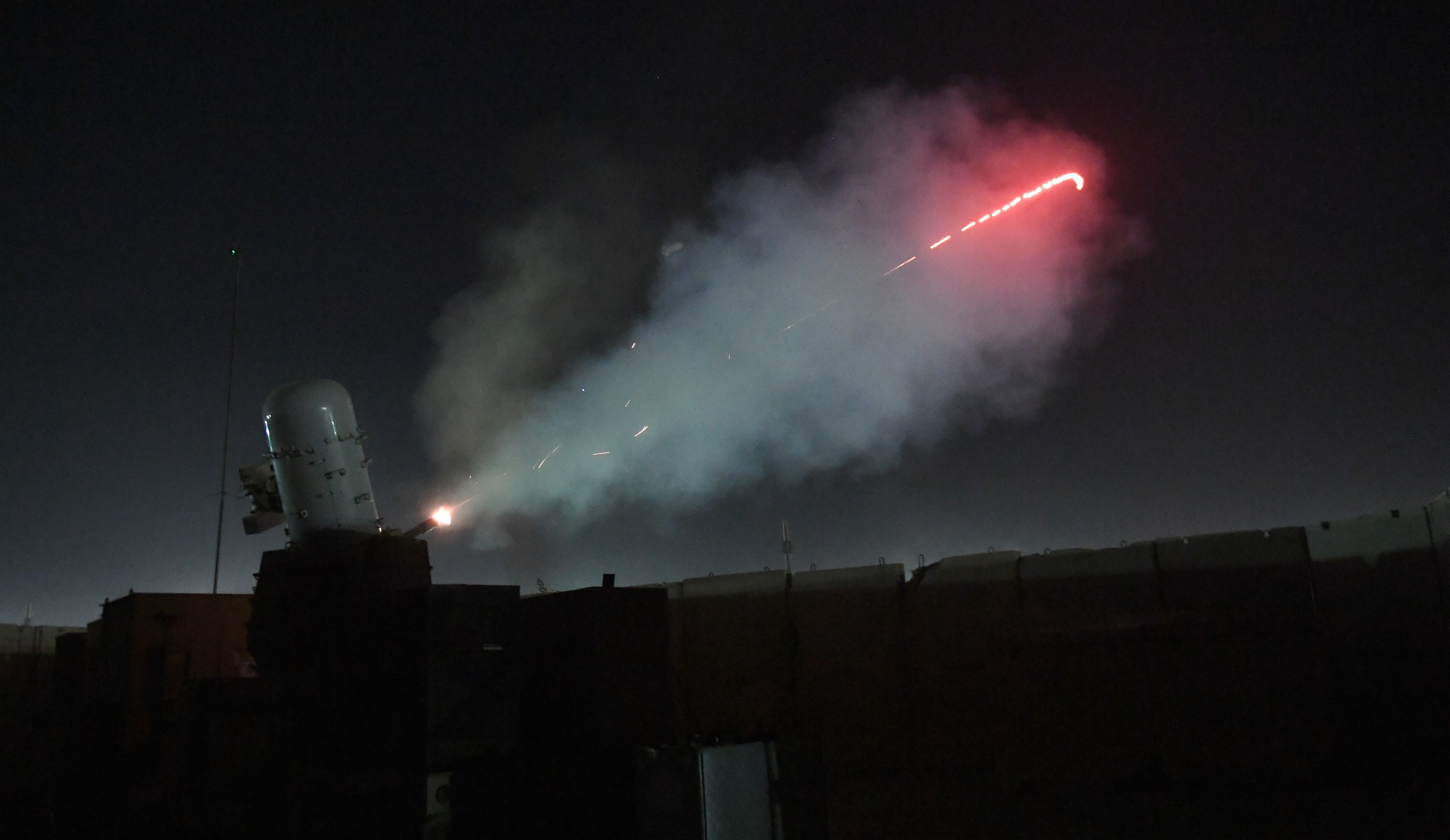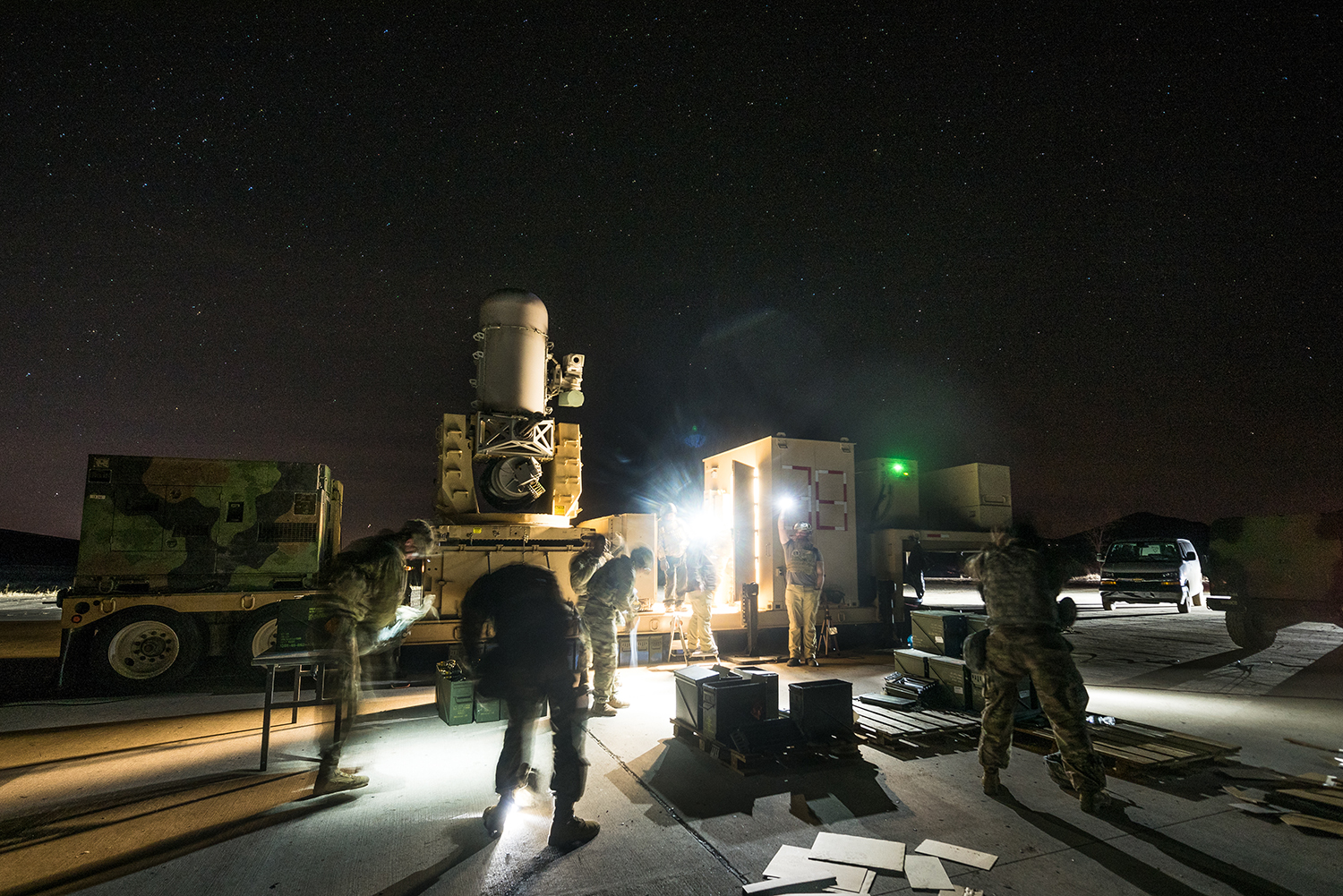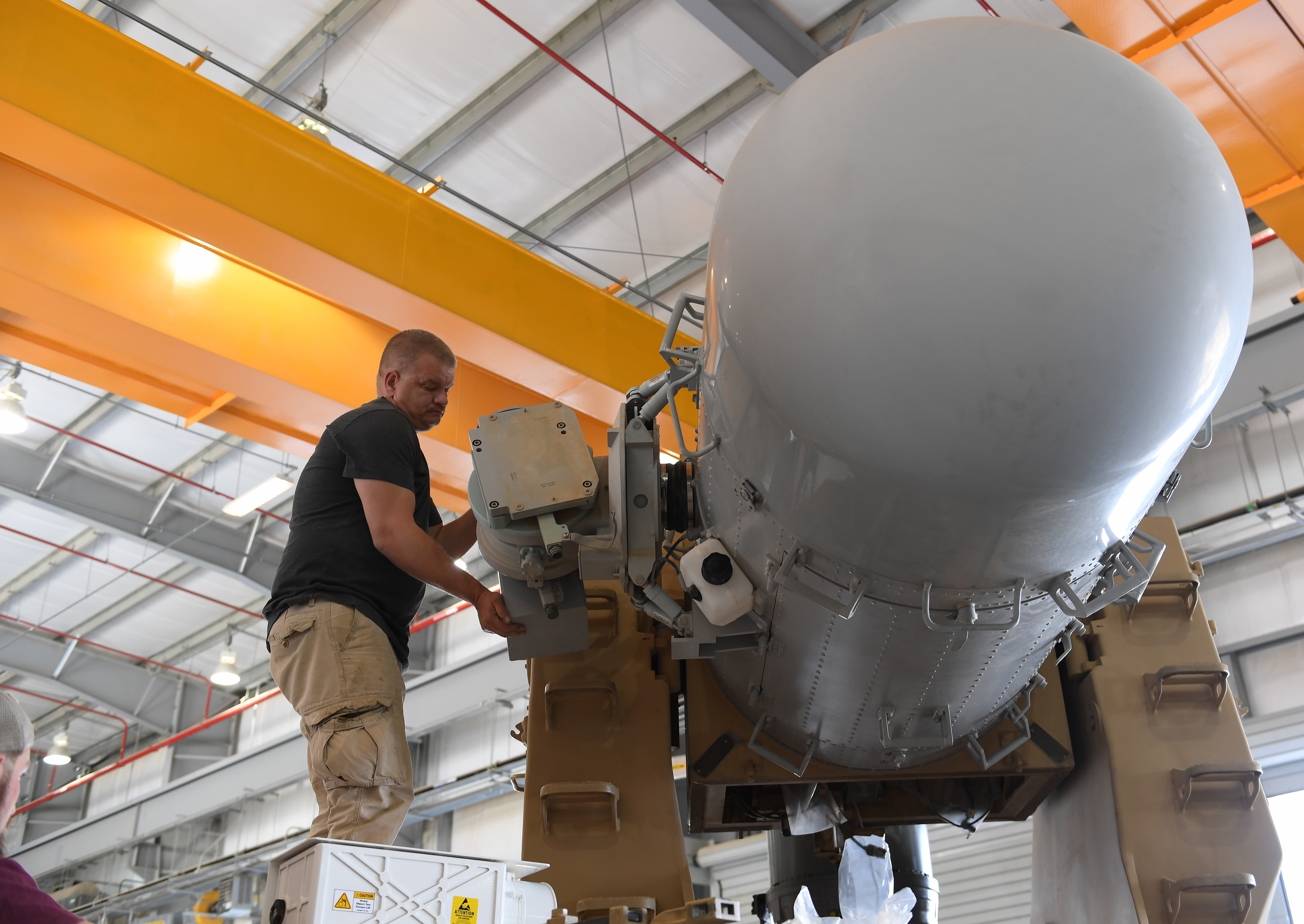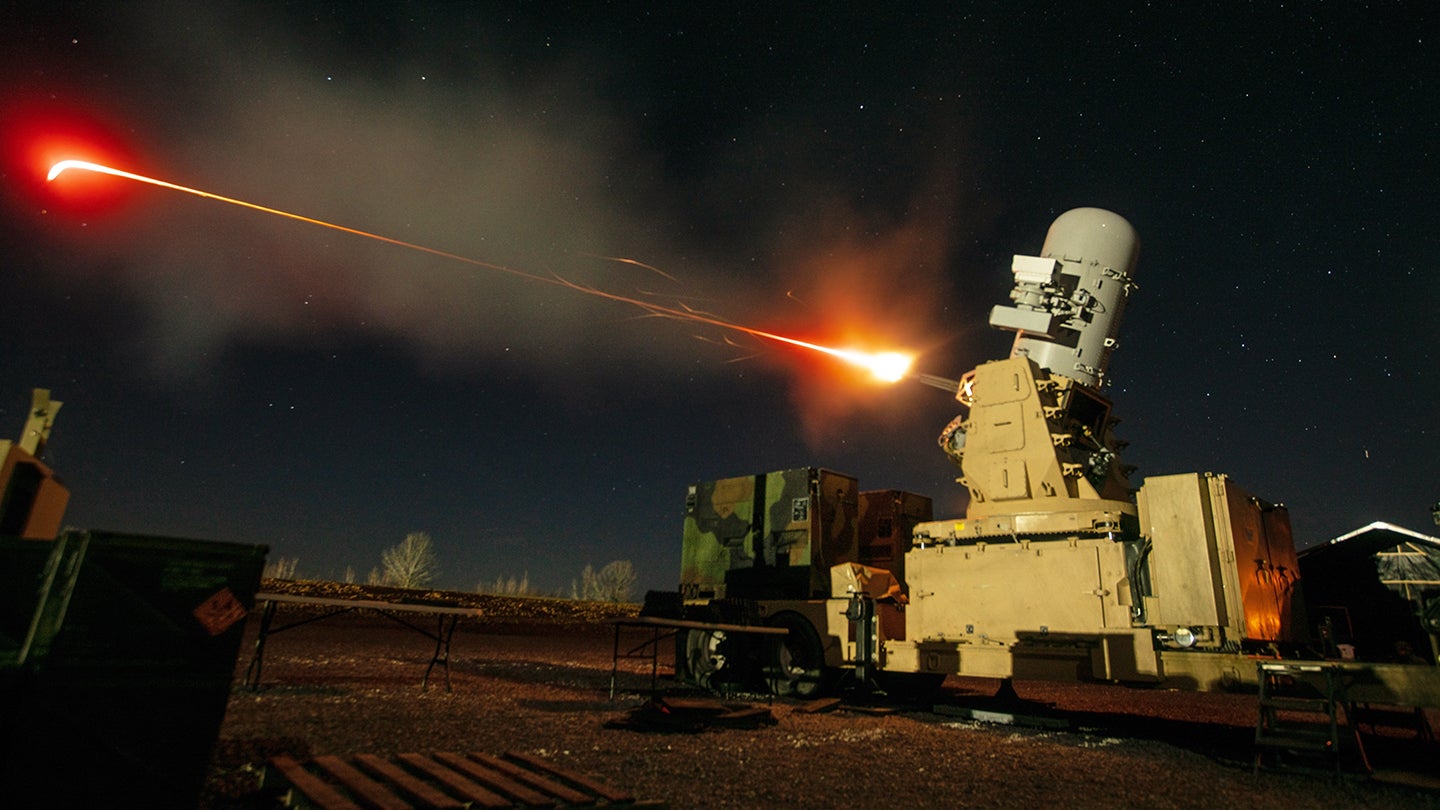Whenever new videos of the Centurion Counter-Rocket, Artillery, Mortar (C-RAM) system emerge, my inbox and social media channels get flooded with people asking what the heck they are seeing and especially hearing in those videos. Such was the case on November 17th, 2020, when seven rockets were fired towards the U.S. Embassy in the Iraqi capital’s sprawling Green Zone after the U.S. announced it was pulling out more troops from the country, leaving a force of just 2,500 behind. Some of the rockets ended up killing an innocent child outside the Green Zone and wounded other Iraqi civilians, while a few others landed inside. As it has for a decade and a half, Centurion was lying in wait near the U.S. Embassy ready to instantly come alive to send its wall off specialized 20mm projectiles into the sky at the incoming threat.
Centurion’s unique signature is one part fireworks show and another part mechanical lion’s roar. What you are seeing in the video is a dense string of M-940 20mm Multipurpose Tracer-Self Destruct (MPT-SD) rounds. The ammunition is specially engineered to self-destruct at a certain distance so that the string of shells doesn’t take out a city block miles away. The specialized ammunition was originally designed for Centurion’s progenitor, the Vulcan Air Defense System.
Since its rushed development back in 2004, at a time when the insurgency in Iraq was rapidly accelerating, Centurion was always meant to be put to use in areas where friendlies literally surround it. Not really innocent locals, but primarily U.S. and allied service members and contractors, or even buildings full of diplomats and support personnel. It is also used to protect far more advanced and longer-range air defense systems, like the Patriot, from low-end attacks.

It is a short-range system that isn’t there to knock down enemy aircraft or guided missiles, but is instead meant to swat lower-end artillery shells, mortar rounds, and rockets out of the sky before they can land within a fairly limited radius, roughly under a mile, that lies beneath its protective umbrella. As such, the engagement windows are very short and the reaction times are tiny. Because of this, those who have served amongst this robotic guardian are all too aware that its protection comes at a startling cost.
Literally, it startles the hell out of people.
This is especially true when raid sirens that sound to tell people to take cover have little time to beat Centurion to the audible punch.
The sound of the weapon’s 20mm Vulcan cannon, a Gatling-style gun nearly identical to the ones used in numerous American fighters built over the decades, from the F-104 to the F-22 Raptor, is as terrifying as it is fascinating. While the A-10 Warthog’s famed GAU-8/A Avenger 30mm cannon gets all the “BRRRRTTTT” love, the Vulcan puts out a similar, but slightly less throaty howl. It’s a product of spewing between 3,000 and 4,500 rounds per minute out of its six revolving barrels.







Centurion was adapted directly from the Mk 15 Phalanx Close-In Weapon System (CIWS), which has stood guard on a huge array of U.S. Navy and allied vessels for four decades, and still does so today in regularly upgraded form. A big difference between the systems, beyond the fact that one is mounted on a mobile flatbed trailer while the other rests on a ruggedized naval weapons mount, is the fact that the CIWS sprays Mk 149 tungsten-cored armored piercing discarding-sabot (APDS) projectiles, not self-destructing shells. The ship-based system buys back additional range and minimizes dwell-time on a target by attempting to shred it with a barrage of these super-dense tungsten penetrators. Centurion doesn’t have this luxury as that barrage of penetrators could do massive harm to nearby life and property. That doesn’t mean Centurion’s self-destructing shells are perfect, but they are a far better choice for its mission set than the alternatives.

Both systems are equipped with a similar Ku-band search radar (the dome on top) and tracking radar (located above the gun barrels in the front of the cylinder enclosure). The software is different though as the threats are quite dissimilar, as is each variant’s operating environment. Gauging if the threatening artillery projectile is actually a threat to the area the Centurion gun system protects is a key factor that can influence whether it attempts a shoot down or not.
Both systems also feature a similar bore-sighted electro-optical system for target identification, tracking, and kill evaluation. As such, it is a self-contained system that can work on its own without being networked into a larger integrated defensive system, although it can be. Still, oftentimes multiple Centurions guard a single base, providing enough coverage area to defend sensitive locales and extra engagement capability for more complex attacks. It’s thought that the Centurion system holds about five to nine engagements worth of ammunition depending on the situation.

It isn’t clear what the success rate is for Centurion, but I have heard numbers between 60% and 80% thrown around. Clearly, the system’s effectiveness is limited by its direct fire nature and the volume of fire that is incoming at any given time. In other words, it really isn’t designed to counter high-volume simultaneous attacks.
While dozens of Centurions were built, some of which still serve today, many more C-RAM solutions now exist. These include the far more capable and farther-reaching Israeli Iron Dome, other larger caliber automated gun systems, and new directed energy (laser) C-RAM systems, the latter of which will be fielded in the not so distant future. But, even with these options, Centurion still stands watch over U.S. troops and diplomats that are tasked with operating in one of the most unwelcome working locations on earth.
Contact the author: Tyler@thedrive.com
